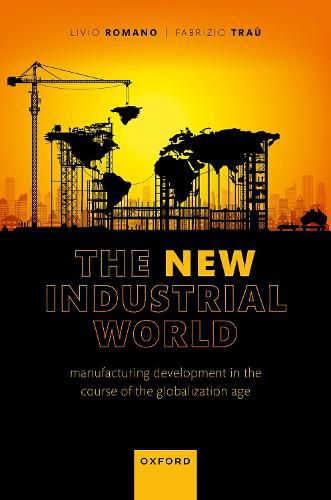Readings Newsletter
Become a Readings Member to make your shopping experience even easier.
Sign in or sign up for free!
You’re not far away from qualifying for FREE standard shipping within Australia
You’ve qualified for FREE standard shipping within Australia
The cart is loading…






In The New Industrial World: Manufacturing Development in the Course of the Globalization Age, Romano and Trau analyse industrial development, focussing upon the spreading of manufacturing activities beyond the boundaries of the advanced economies. They explain how this event has completely changed the nature of the relationship between the 'North' and the 'South' of the world, linking them together for the very first time on productive grounds through the development of global value chains. Providing an overall account of the reasons for the Globalization Age to rise and, in later years, to fall, the authors offer a new interpretation of the relationship between globalization and the upsurge of industrialization outside the advanced world, highlighting the role played by industrial policy in the building of manufacturing capabilities in emerging countries.Starting with the great financial crisis that hit the world at the end of the first decade of the 2000s, Romano and Trau explain how a 'new normal' has emerged, the basic features of which can be found in a slowdown of manufacturing growth rates, and in the comeback of distance as a key determinant of economic behaviour (also in light of the upsurge, in later years, of exogenous shocks such as the pandemic and Russian-Ukrainian war).
$9.00 standard shipping within Australia
FREE standard shipping within Australia for orders over $100.00
Express & International shipping calculated at checkout
In The New Industrial World: Manufacturing Development in the Course of the Globalization Age, Romano and Trau analyse industrial development, focussing upon the spreading of manufacturing activities beyond the boundaries of the advanced economies. They explain how this event has completely changed the nature of the relationship between the 'North' and the 'South' of the world, linking them together for the very first time on productive grounds through the development of global value chains. Providing an overall account of the reasons for the Globalization Age to rise and, in later years, to fall, the authors offer a new interpretation of the relationship between globalization and the upsurge of industrialization outside the advanced world, highlighting the role played by industrial policy in the building of manufacturing capabilities in emerging countries.Starting with the great financial crisis that hit the world at the end of the first decade of the 2000s, Romano and Trau explain how a 'new normal' has emerged, the basic features of which can be found in a slowdown of manufacturing growth rates, and in the comeback of distance as a key determinant of economic behaviour (also in light of the upsurge, in later years, of exogenous shocks such as the pandemic and Russian-Ukrainian war).